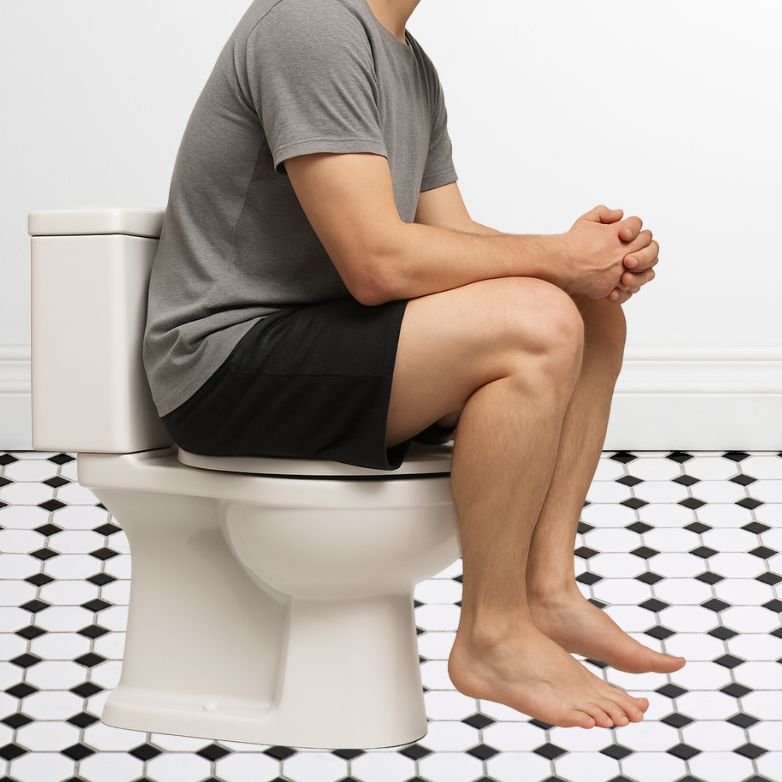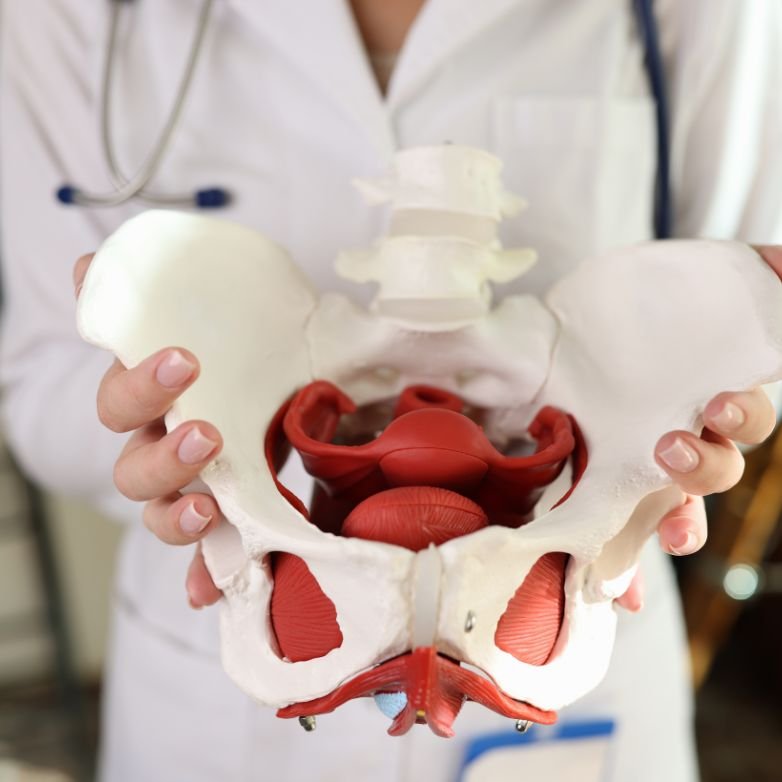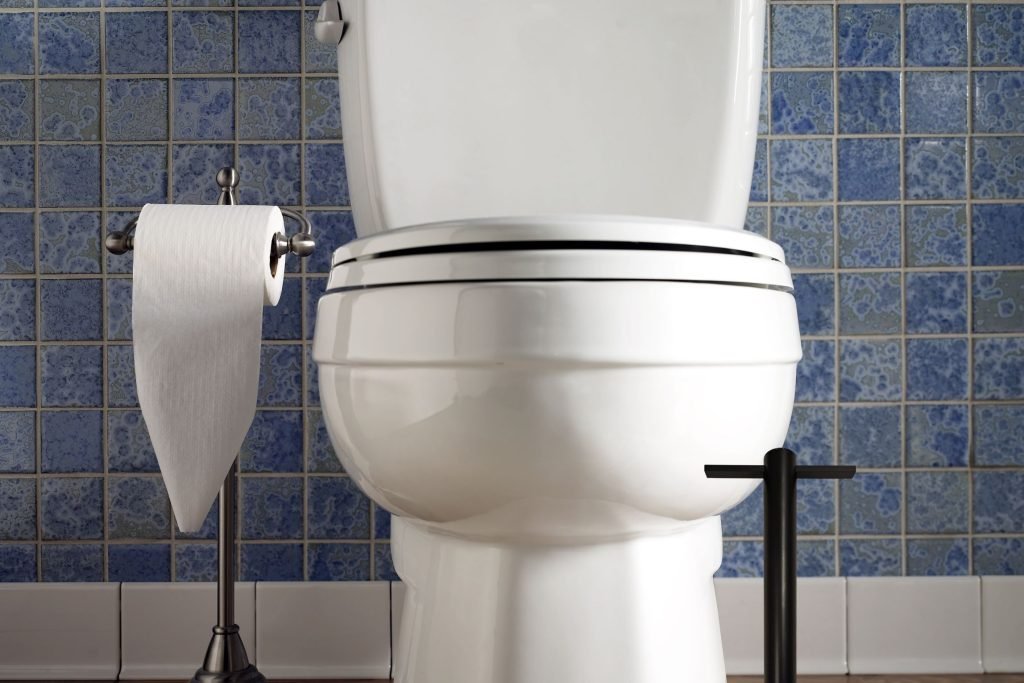Toilet Postures Decoded: Assisted Squatting for Healthy Aging
Table of Contents
The Hidden Struggle Nobody Talks About
Picture this. An older gentleman, let’s call him Harold, sits on his porcelain throne early in the morning. The bathroom door is locked, the fan hums, and the coffee he drank 30 minutes ago is working its way through. But Harold isn’t reading the newspaper. He isn’t scrolling through his phone. He’s gripping the sides of the toilet seat, straining, groaning, fighting his own body for relief.
For Harold, the simple act of going to the bathroom has become a daily battle. It takes time, it hurts, and afterward he still doesn’t feel finished. He chalks it up to “getting older,” as if declining bathroom health is an unavoidable curse of aging. But here’s the shocking truth: Harold’s problem isn’t really about his age. It’s about his posture.
Yes—you read that right. The way you sit on the toilet has everything to do with whether you walk out of the bathroom relieved and comfortable or frustrated and still bloated. And while most people don’t talk about it—especially older adults—it’s a universal truth that could save countless people from unnecessary discomfort, straining, and even serious digestive complications.
This is where assisted squatting comes in. It’s the elegant, joint-friendly solution that helps aging bodies reclaim the natural posture humans were designed to use when eliminating waste. With nothing more than a small footstool or an ergonomic device like The PoopSTICK, seniors can unlock the health benefits of squatting without ever having to drop into a full crouch.
And make no mistake—this is not some gimmick. This is a life-changing adjustment that can reduce constipation, protect the pelvic floor, minimize hemorrhoids, and restore a natural rhythm to your digestion.
TL;DR
The way you sit on the toilet has a profound effect on your bowel health. Humans are built to squat, not sit, when eliminating waste. Sitting at a 90-degree angle (modern toilet posture) creates a kink in the rectum, leading to straining, constipation, and incomplete evacuation. Squatting straightens that kink, making elimination faster, easier, and healthier.
But for aging bodies with stiff joints, bad hips, or limited mobility, full squatting isn’t practical—or safe. That’s where assisted squatting comes in: by elevating your feet with a stool, box, or specially designed tool like The PoopSTICK, you can recreate the benefits of natural squatting without the physical demands. The result? Healthier bowel movements, less strain, better digestion, and improved quality of life.
If you’ve been blaming age for your bathroom struggles, it’s time to rethink the problem. Your body might just be begging you to adjust your posture.
Key Takeaways Up Front
Toilet posture matters more than you think. Sitting on a toilet in the modern “chair position” creates unnecessary strain on your bowels.
Squatting is nature’s design. It aligns your rectum, relaxes critical muscles, and allows complete elimination.
Assisted squatting is the solution for aging bodies. By elevating your feet, you mimic squatting’s benefits without risking your knees, hips, or balance.
This is not about convenience—it’s about health. From constipation to colon disease, poor elimination posture has real consequences.
Tools like The PoopSTICK make assisted squatting safe and effective. Whether you’re 28 or 88, assisted squatting can improve your bathroom experience and protect your long-term health.

Why Toilet Posture Matters More Than You Realize
We live in a culture where people obsess about diet, exercise, supplements, and medications—but almost nobody talks about how posture on the toilet affects bowel health. Yet every single day, multiple times a day, your body goes through the process of elimination. And here’s the uncomfortable truth: if you’re doing it wrong, you’re paying the price.
Anatomically, here’s what happens when you sit in the modern “chair” posture. Your rectum is bent at an angle by a muscle called the puborectalis. This kink acts like a valve, helping you stay continent when you’re standing or sitting. But when it’s time to go, that kink has to relax. In a full squat, your thighs press against your abdomen, the puborectalis muscle relaxes, and the rectal angle straightens. Waste flows smoothly and completely.
Now contrast that with sitting at 90 degrees on a toilet. The kink stays tight. Your abdominal muscles do the work your posture should have done. That’s why you strain. That’s why you push. That’s why so many people walk away still feeling “unfinished.”
This isn’t theory—it’s been studied. Researchers in Israel (Levy et al., 2003) measured the difference between sitting and squatting. Squatting reduced straining and made elimination faster and more complete. Sitting increased pressure, effort, and time.
In other words: posture is not optional. It is the foundation of healthy elimination.
The Challenge of Aging Bodies
Now let’s layer in the reality of aging. As the years pile up, so do the aches. Knees don’t bend like they used to. Hips get stiff. Balance isn’t as steady. Muscles aren’t as strong. For an older adult, dropping into a full squat isn’t just difficult—it can be dangerous. One wrong move and you’re on the bathroom floor with a broken hip.
This is why so many seniors give up on the idea of squatting altogether. They resign themselves to straining on the toilet, chalking it up to “just how it is.” Constipation becomes normal. Hemorrhoids become normal. Spending 20 minutes in the bathroom becomes normal. But none of it is normal.
What’s really happening is that aging bodies still need the benefits of squatting—they just can’t get there safely. And that’s exactly why assisted squatting is such a breakthrough.
Assisted Squatting: The Safer, Smarter Way
Assisted squatting is simple: you raise your feet while sitting on the toilet, usually with a stool, box, or ergonomic device. By lifting the feet, you tilt the pelvis, relax the puborectalis muscle, and straighten the rectal angle—just like in a full squat, but without the stress on joints.
Think of it this way: imagine trying to push a heavy cart up a curb. If the curb is high, you struggle and strain. But if you lower the curb with a ramp, the cart rolls smoothly. Assisted squatting is that ramp. It lowers the barrier between your body and a healthy bowel movement.
For older adults, it’s the perfect compromise. You stay safely seated, but you give your body the posture it needs to eliminate comfortably. It’s a small change with massive benefits.

The Benefits of Assisted Squatting for Older Adults
Here’s where things get real. Assisted squatting isn’t just about comfort—it’s about health outcomes that matter, especially for aging bodies.
When you stop straining, you protect your pelvic floor muscles—critical for bladder control and overall core stability. You reduce pressure on the veins in your rectum, cutting your risk of hemorrhoids and anal fissures. You improve elimination, which means less constipation, less bloating, and a lower chance of complications like diverticulosis.
And perhaps most importantly, you reduce time on the toilet. That matters more than people realize. Long bathroom sessions increase the risk of blood pooling, dizziness, and falls when standing up. Short, complete elimination is safer.
For seniors recovering from surgery, living with arthritis, or managing limited mobility, assisted squatting is a bathroom game-changer. It restores dignity, safety, and confidence to one of the most basic human functions.

Tools That Make It Easy
Yes, you could stack some books, drag in a milk crate, or use a random stool. But if you’re serious about protecting your health—and especially if you’re older—you need a tool that’s safe, stable, and designed for the job.
That’s where products like The PoopSTICK come in. It’s designed with the right height, the right angle, and the right stability to make assisted squatting effective and safe for everyone, from kids to seniors. Unlike makeshift boxes, it won’t slip. It won’t wobble. And it won’t turn your bathroom into a tripping hazard.
In short: it’s a purpose-built solution for a universal problem.

Practical Tips for Transitioning
Switching to assisted squatting isn’t complicated, but it does take a little adjustment. Start by elevating your feet just a few inches, then increase as your body gets used to the posture. Focus on relaxing, not straining. Pair the new posture with good hydration and fiber intake to maximize the benefits.
For seniors, make sure your stool has a wide base, non-slip grip, and doesn’t require acrobatics to use. Safety first. Think of it like adjusting a chair—you’re simply setting your body up for the best position to get the job done.
Real-Life Proof

I’ve seen it firsthand. A woman in her seventies, post-hip replacement, couldn’t imagine ever squatting again. She struggled with chronic constipation and was on the verge of prescription laxatives. With assisted squatting, her bathroom trips went from painful marathons to five-minute relief sessions. Another gentleman with severe arthritis reported fewer hemorrhoid flare-ups and finally felt “empty” after using the bathroom.
These aren’t miracles. They’re the natural results of aligning your body with the way it was designed to function.
Reclaiming Nature’s Design
Let’s be blunt. Aging doesn’t have to mean straining on the toilet, living with hemorrhoids, or dreading bathroom trips. The real enemy isn’t age—it’s posture. And the solution is simple, safe, and effective: assisted squatting.
You don’t have to risk your knees. You don’t have to crouch on the floor. You don’t even have to break a sweat. All you need is a small shift in position, a little lift of the feet, and the willingness to take your health seriously.
Your digestion, your comfort, your safety, and your dignity are all on the line. Don’t leave them hanging because of something as basic as posture. Try assisted squatting. Try The PoopSTICK. Reclaim the bathroom as a place of relief, not struggle.
Because no matter your age, your body deserves to function the way nature intended.
Join our Email List
About the Author

James
Founder of The PoopSTICK | Gut Health Advocate | Healthcare Pro
I’m James, the guy who talks about poop so you don’t have to (but probably should). With over 12 years of experience in the healthcare world—and a family history of colon cancer which made gut health personal—I created The PoopSTICK to give people a better, more natural way to poop.
After trying almost every pooping gadget, toilet stool, and gut health trend under the sun, I realized most products were uncomfortable, overhyped, or just plain awkward. So I built something better—designed for real humans who want real results.
The PoopSTICK isn’t just a product; it’s part of a movement to take gut health seriously (while still laughing a little). Through our blog, I share natural health tips, poop-positive education, and easy ways to take control of your digestion—because better bowel movements should be a normal part of life, not an embarrassing mystery.
If you're someone who cares about health, wants to feel better naturally, or just wants to poop like a champion, you're in the right place.
Let’s talk sh*t—so you can get rid of it better.

James
Founder of The PoopSTICK | Gut Health Advocate | Healthcare Pro
I’m James, healthcare veteran and gut health advocate on a mission to help you poop better—naturally. With over 12 years in the industry and a personal drive to prevent colon cancer, I created The PoopSTICK after being let down by every “solution” out there.
This isn’t just a stick—it’s a movement (literally). I mix humor, health tips, and real talk to make better bowel movements something we can actually talk about.
Let’s ease your poop!
Past Blog Posts

Is Wheat Wrecking Your Gut? What Celiac Disease Reveals
Wheat isn’t the villain—it’s the kind of wheat that’s wrecking your gut. From ancient grains to modern hybrids, discover how today’s wheat triggers inflammation, worsens celiac symptoms, and sabotages digestion—and what smarter, safer alternatives can finally bring your gut back to balance.

Gut Health and GLP-1: The Hidden Link to Weight and Energy
Your gut isn’t just digesting food—it’s controlling your hunger, energy, and even how fast you burn fat. Inside you is a powerful hormone called GLP-1, and when your gut’s out of balance, it shuts down. Discover how to reactivate this hidden fat-burning axis naturally—no drugs, no gimmicks, just real gut power.

Loaded Water: The Hidden Threat to Your Gut Health
Your gut might be under attack every time you take a sip of water. “Loaded water” — filled with hidden chemicals and disruptors — could be wrecking your microbiome without you even knowing it. Here’s what’s really in your glass, how it affects digestion, and what you can do to fight back.

